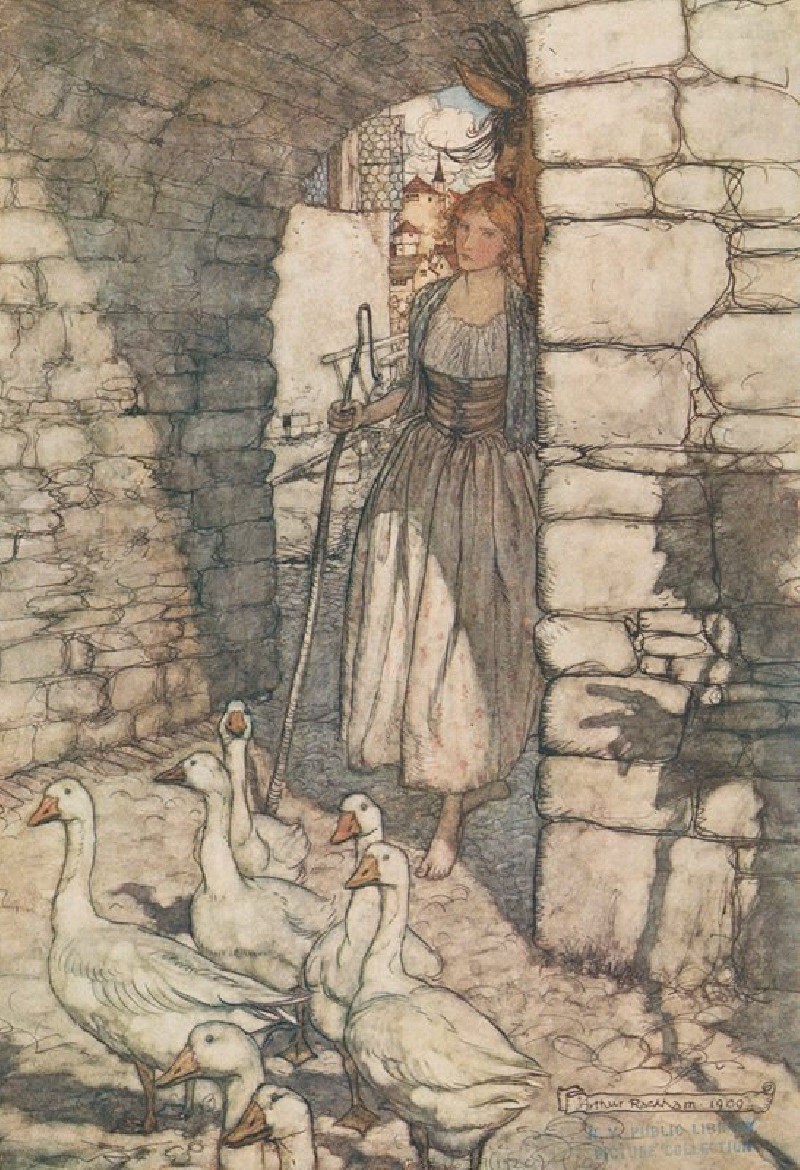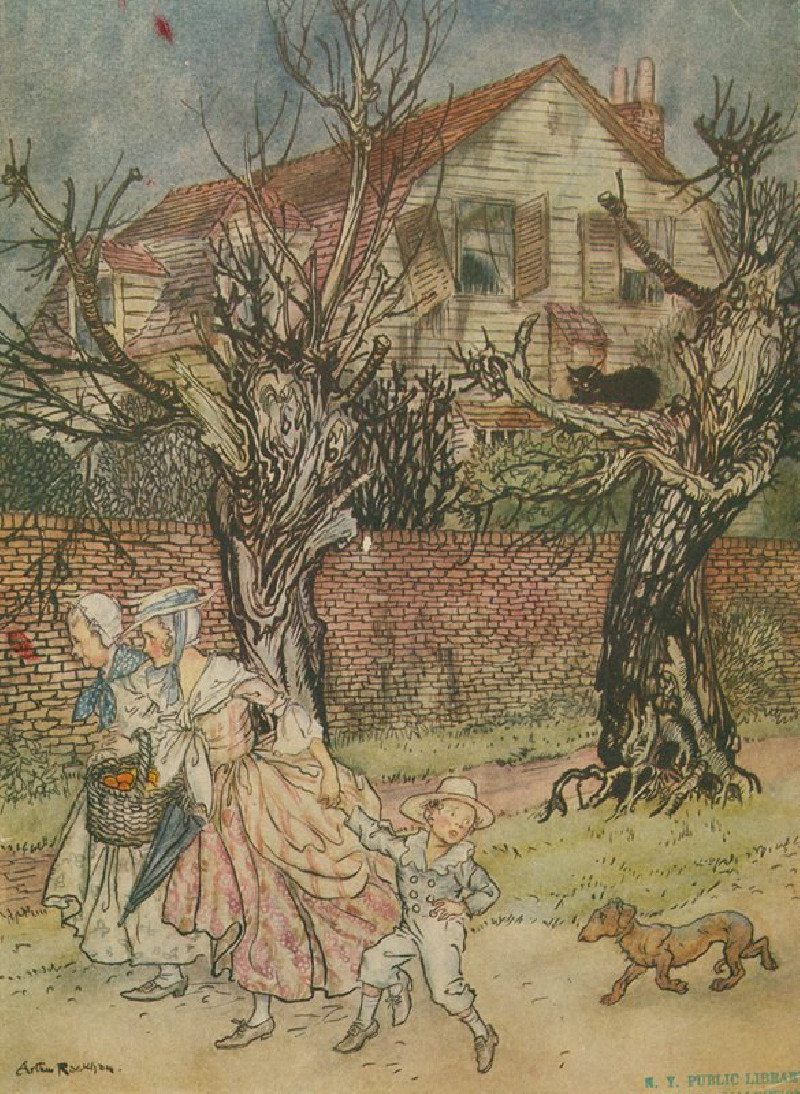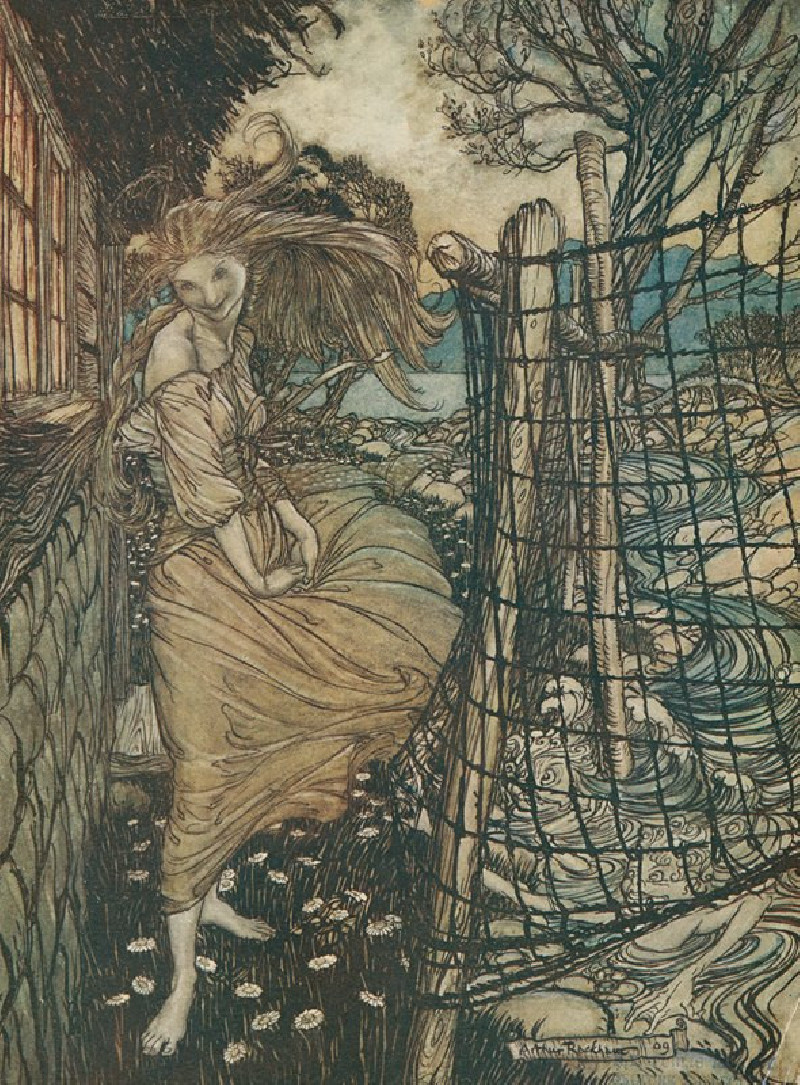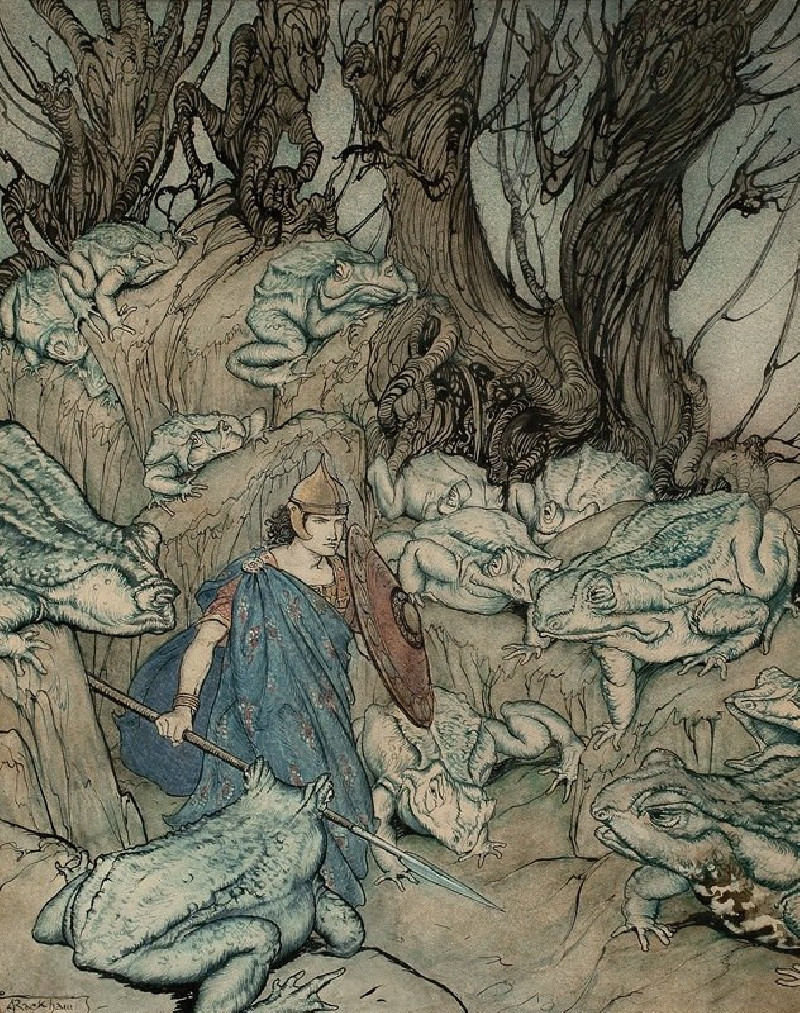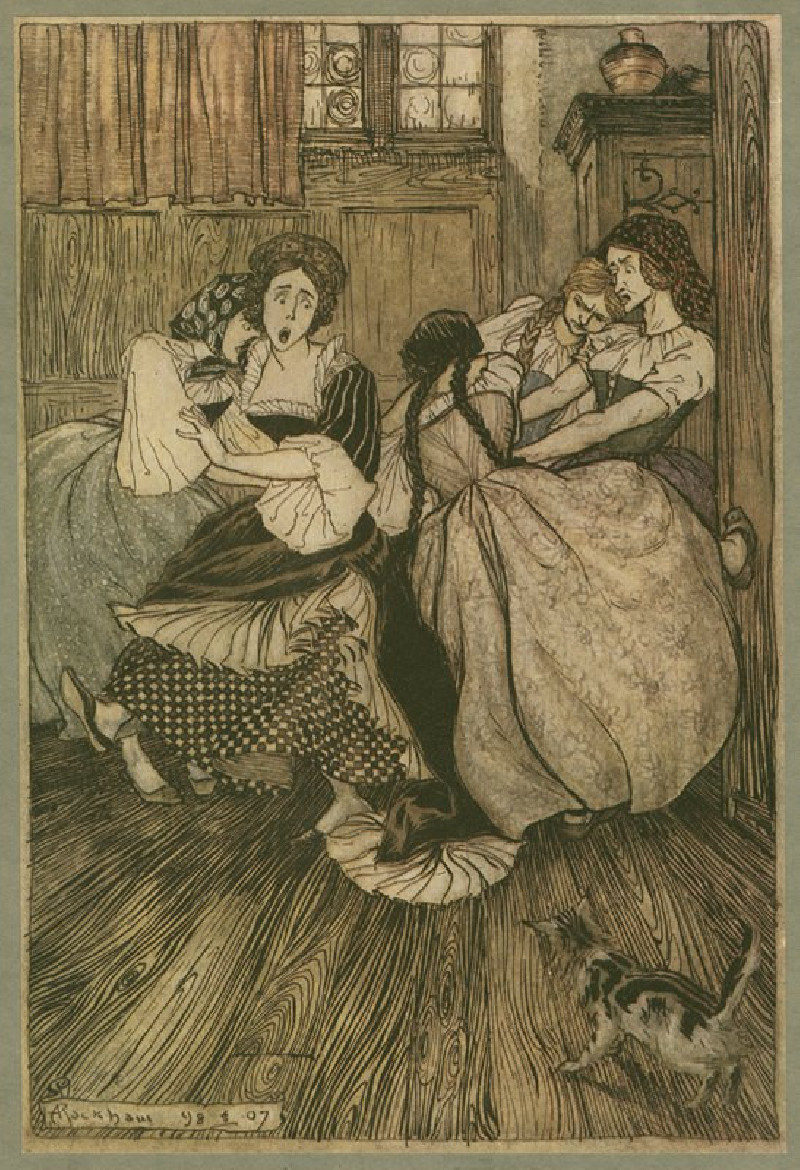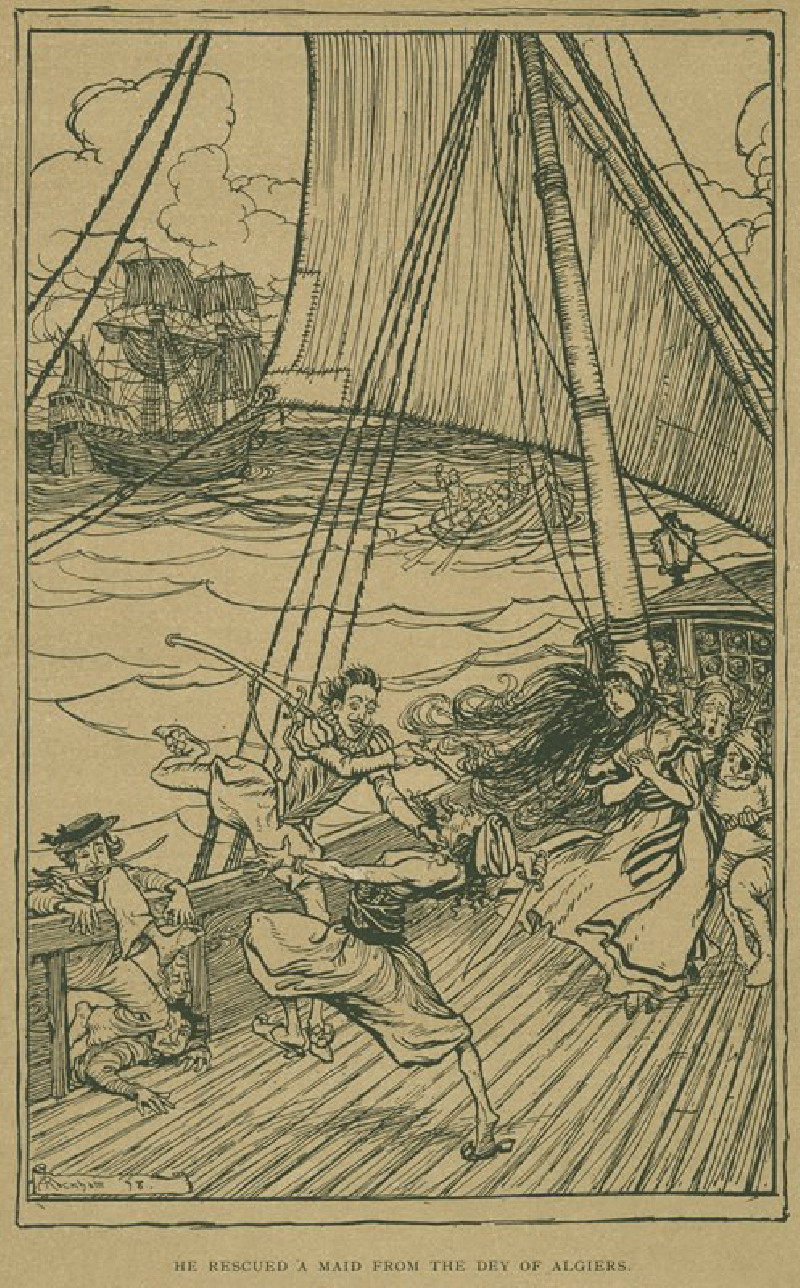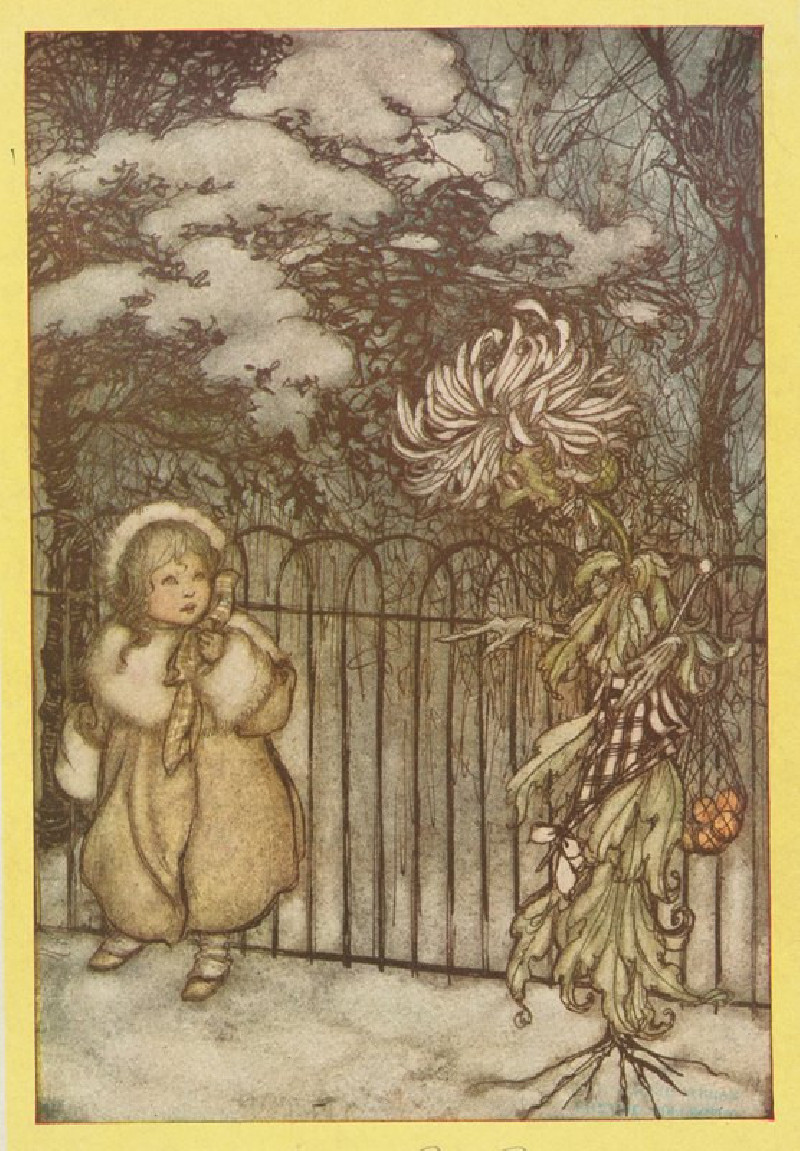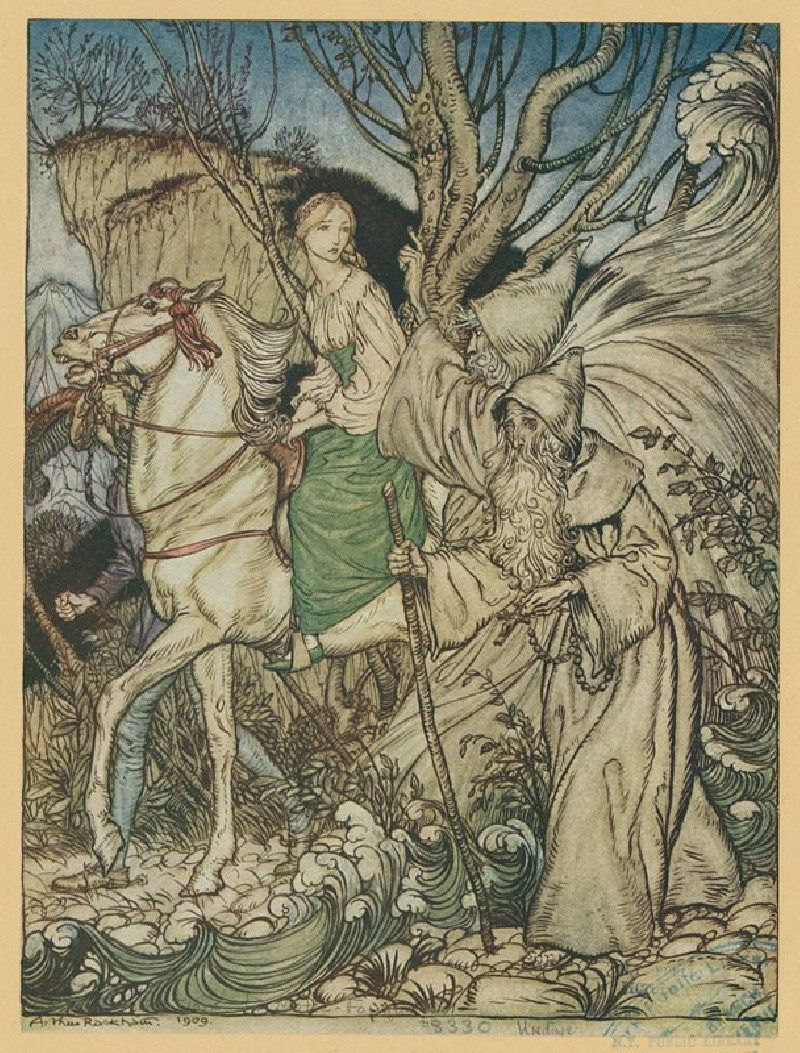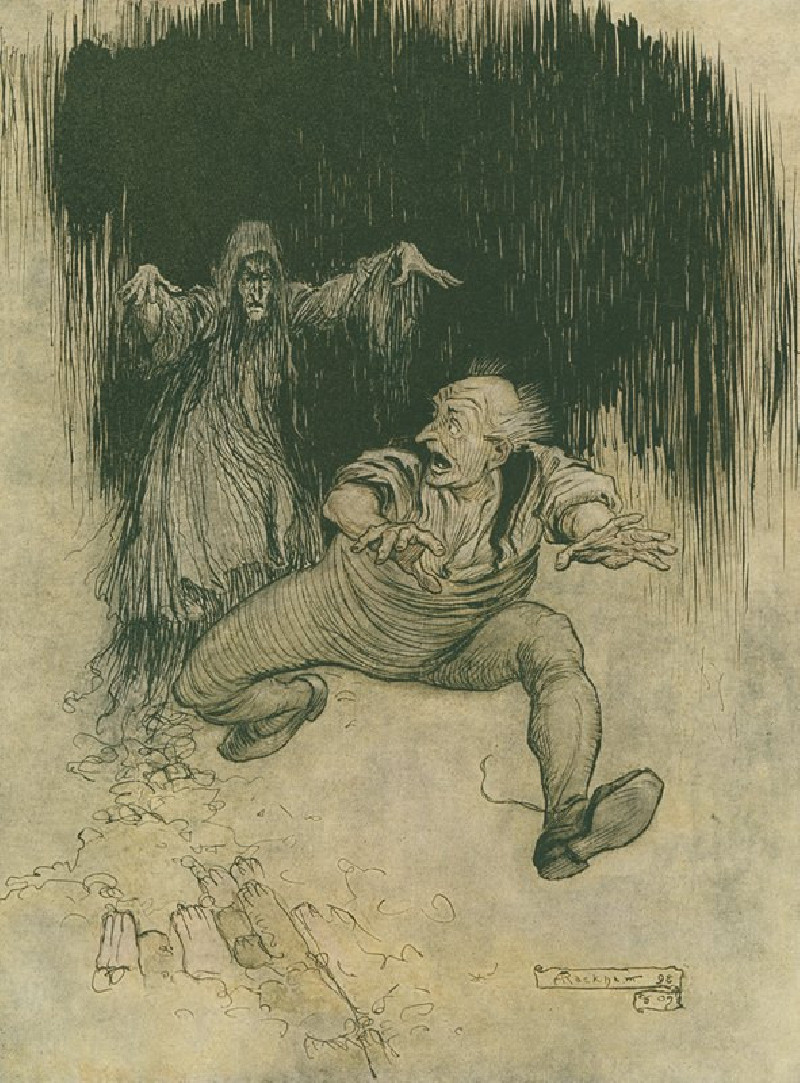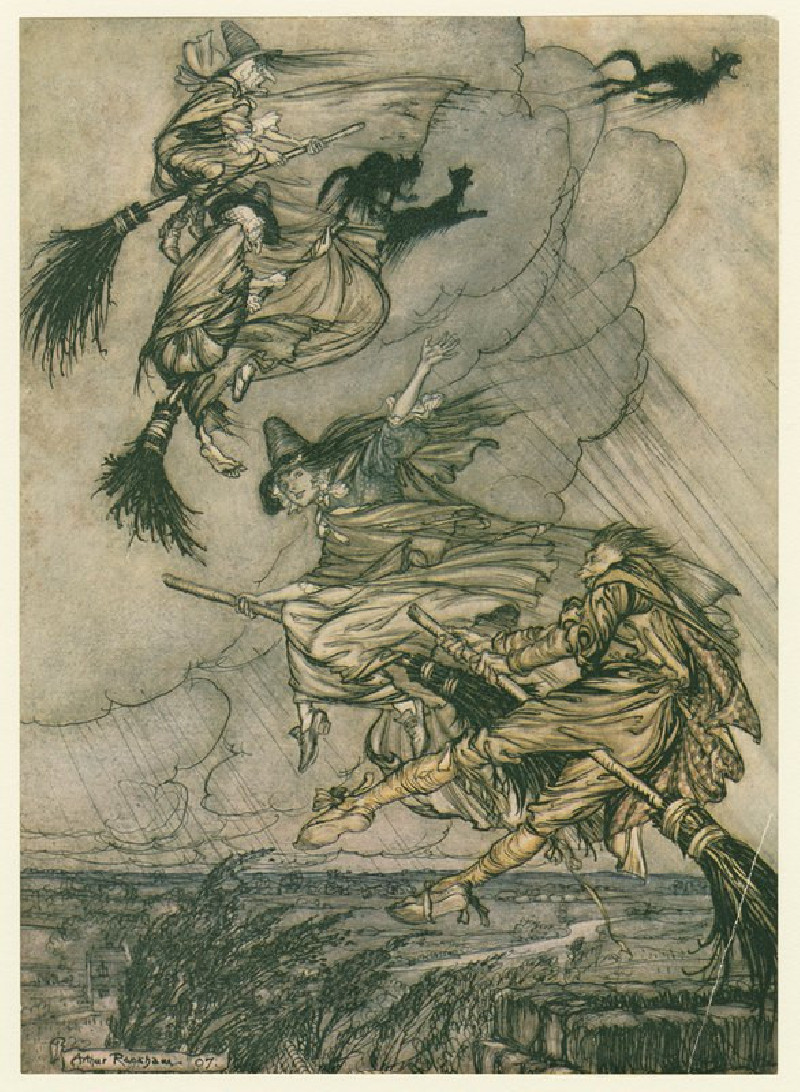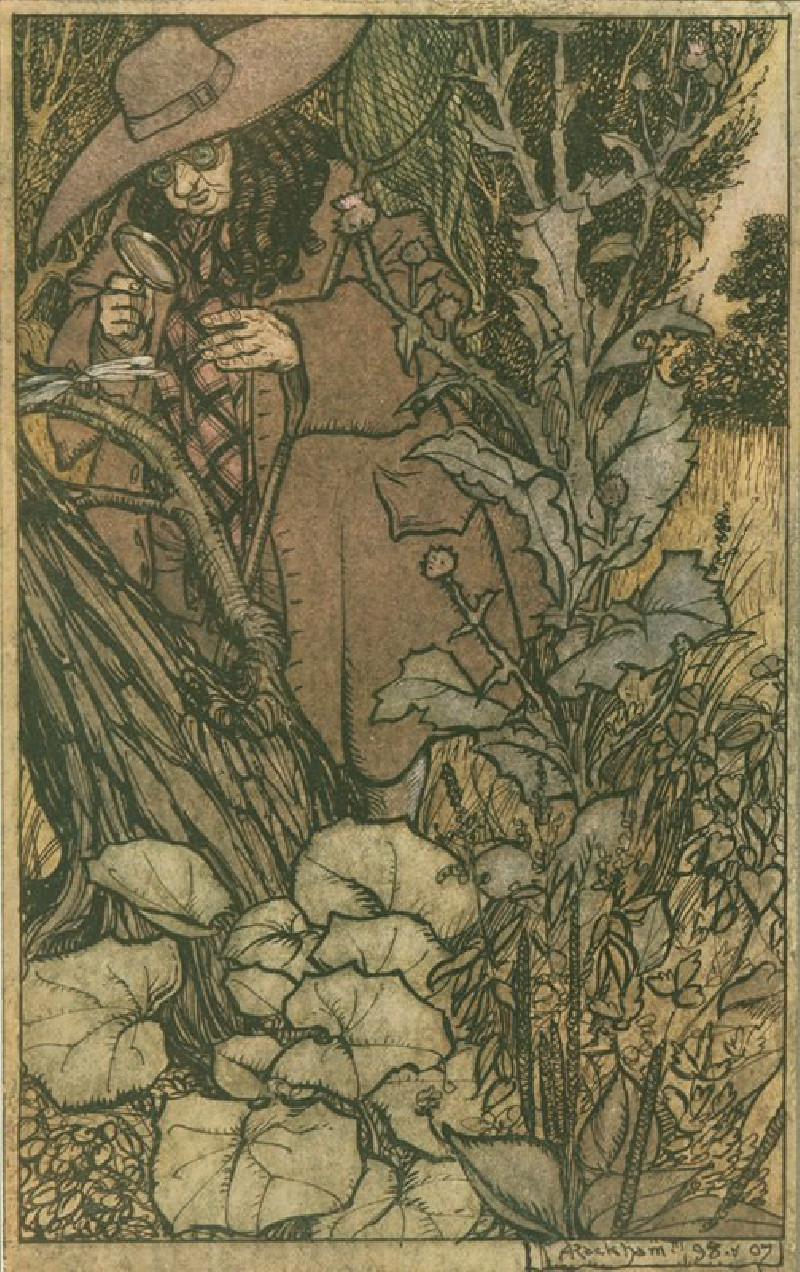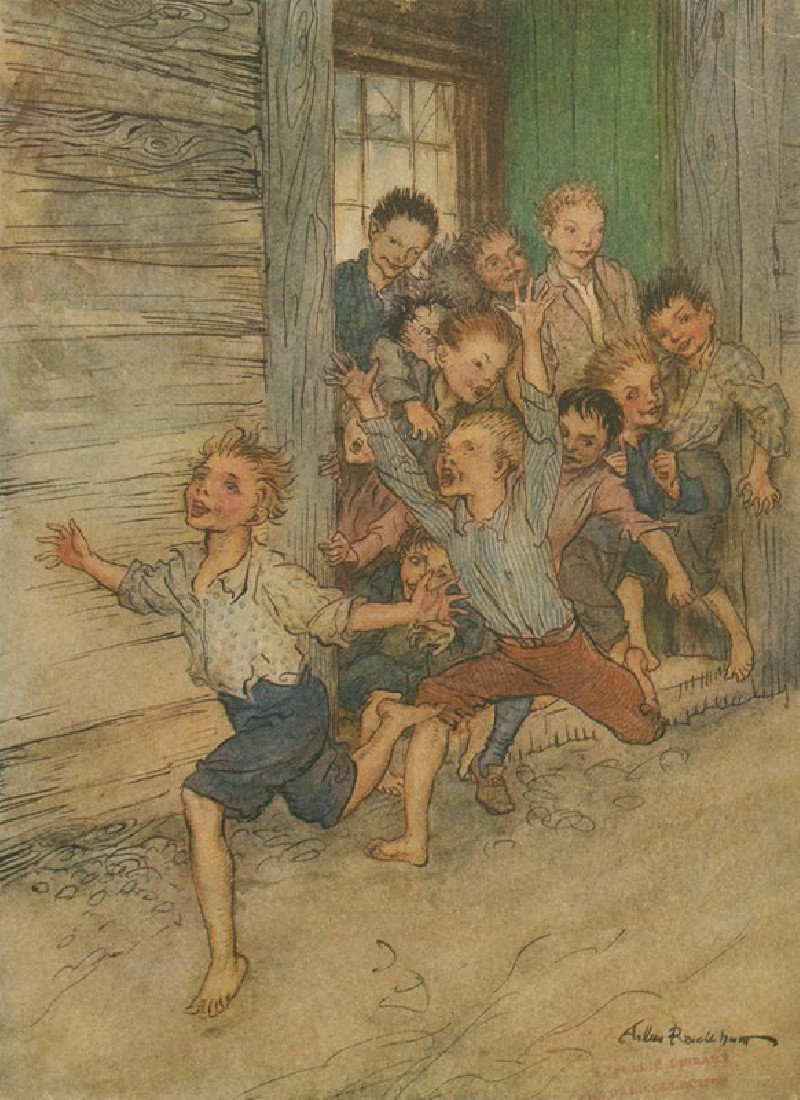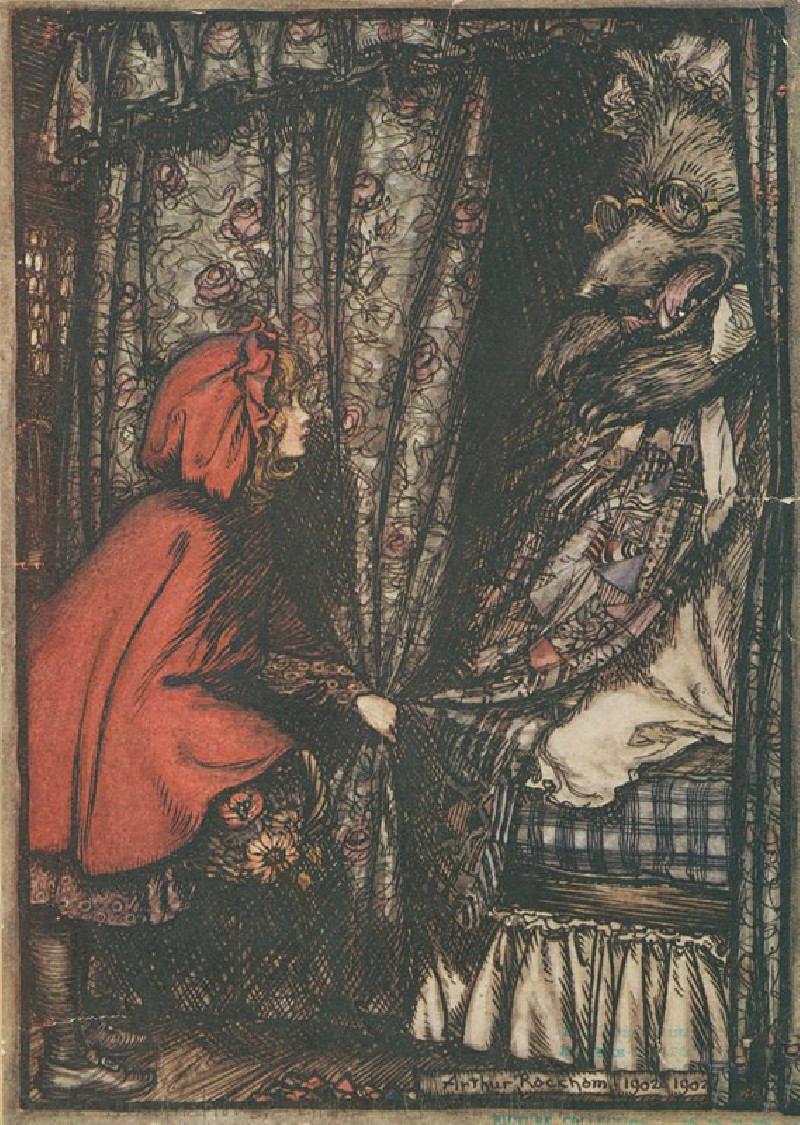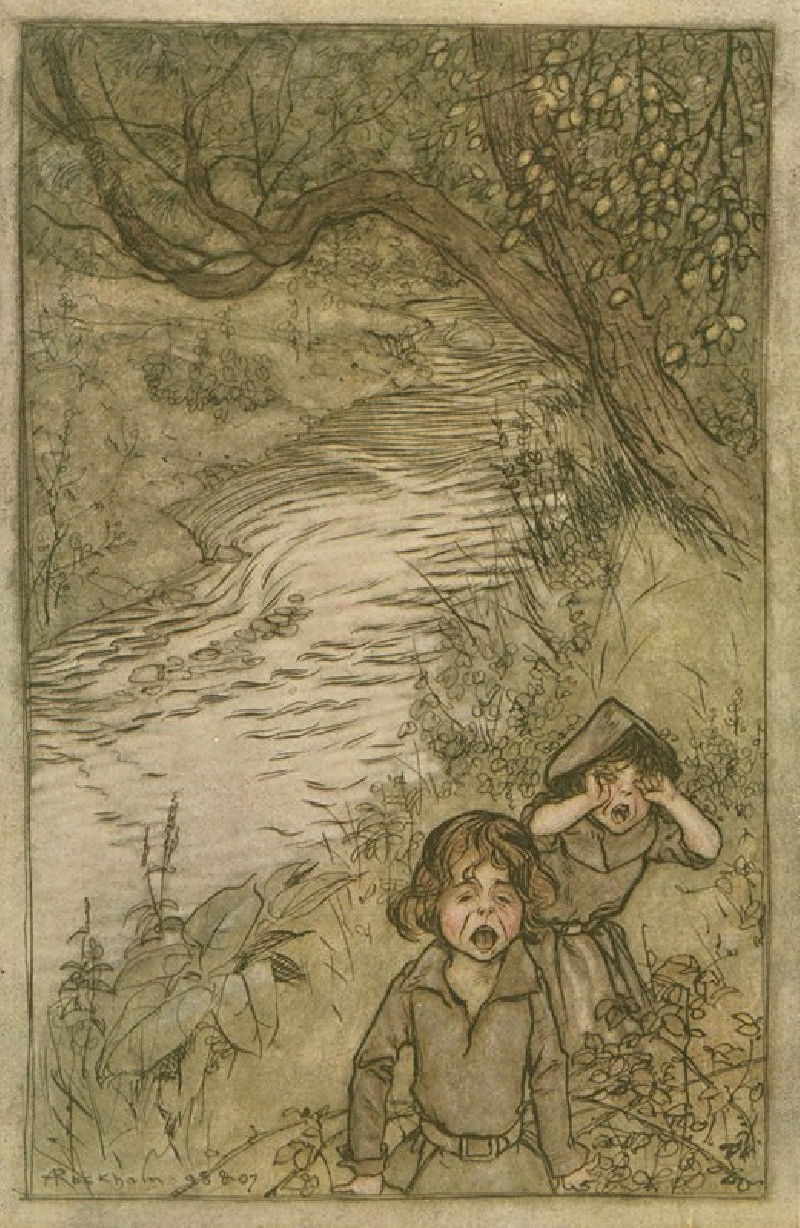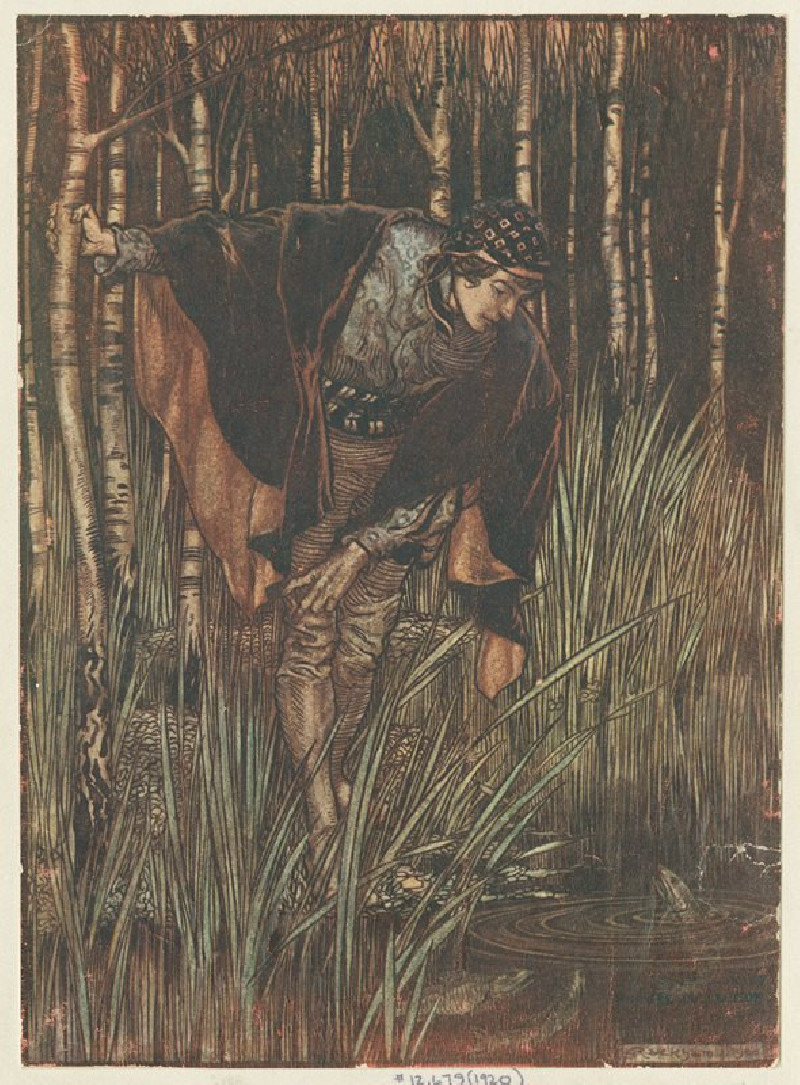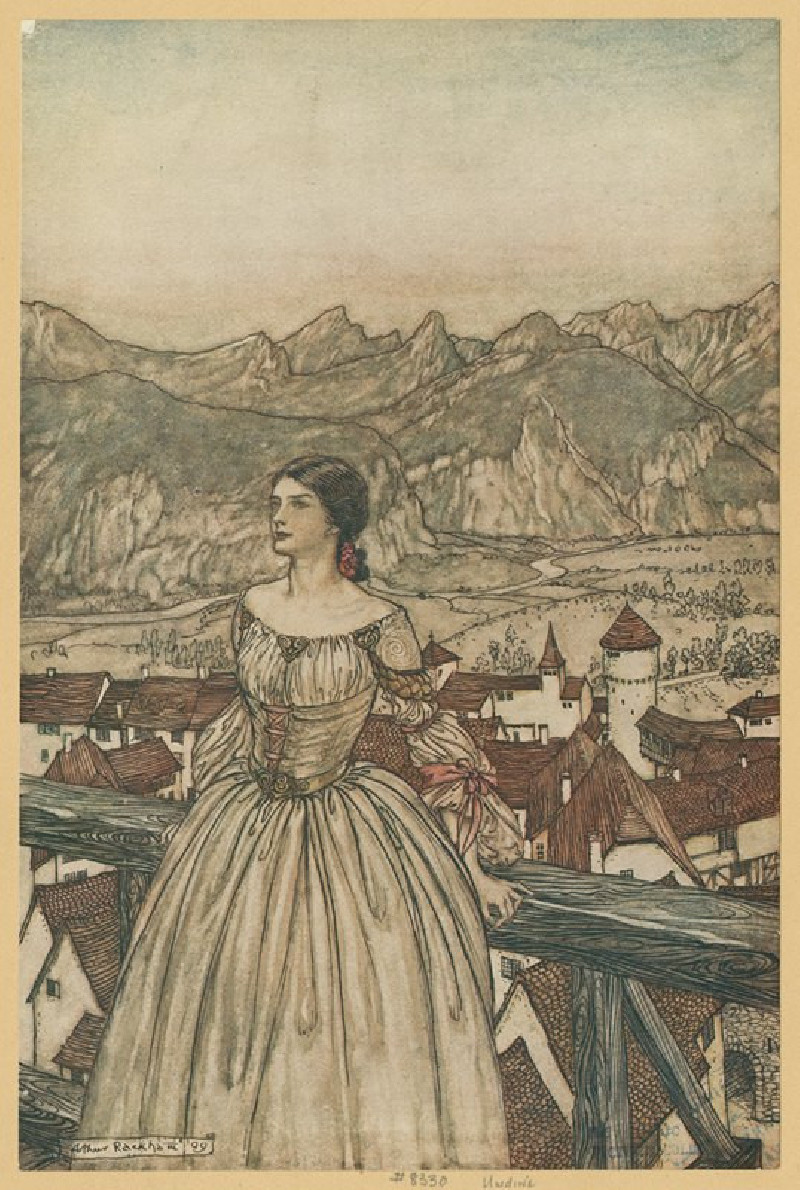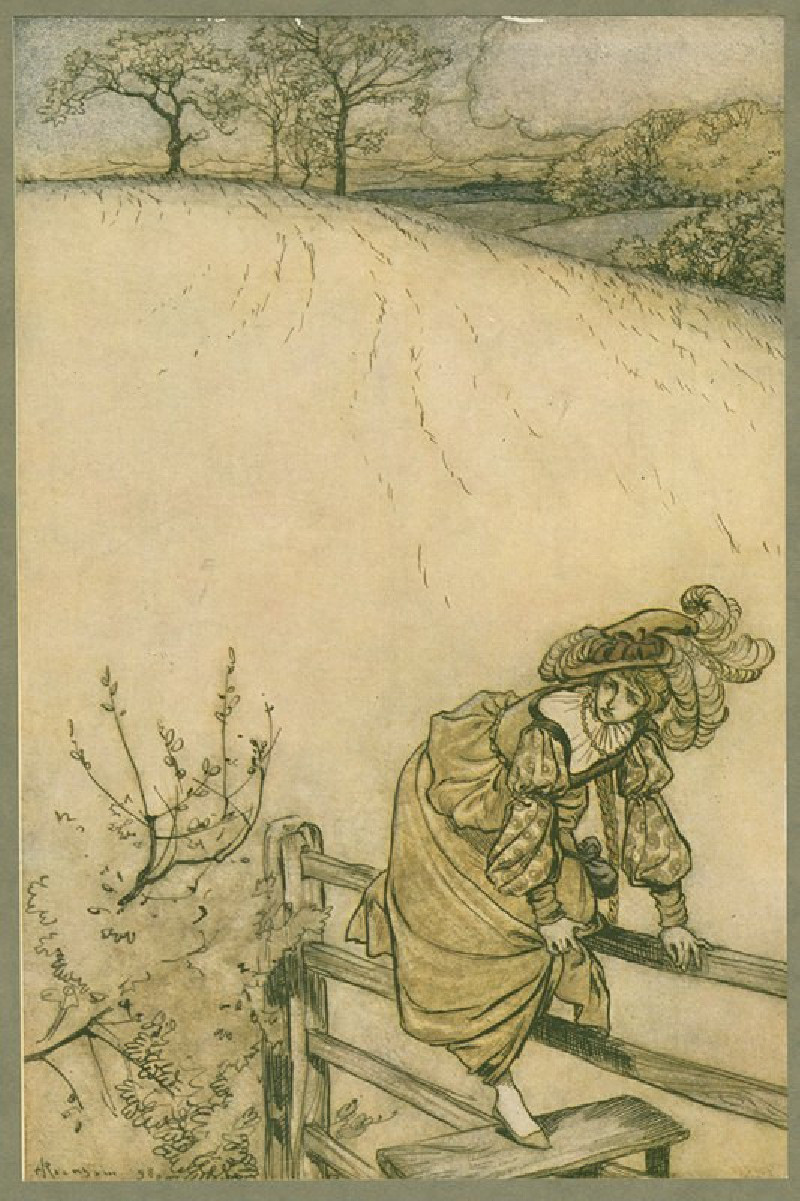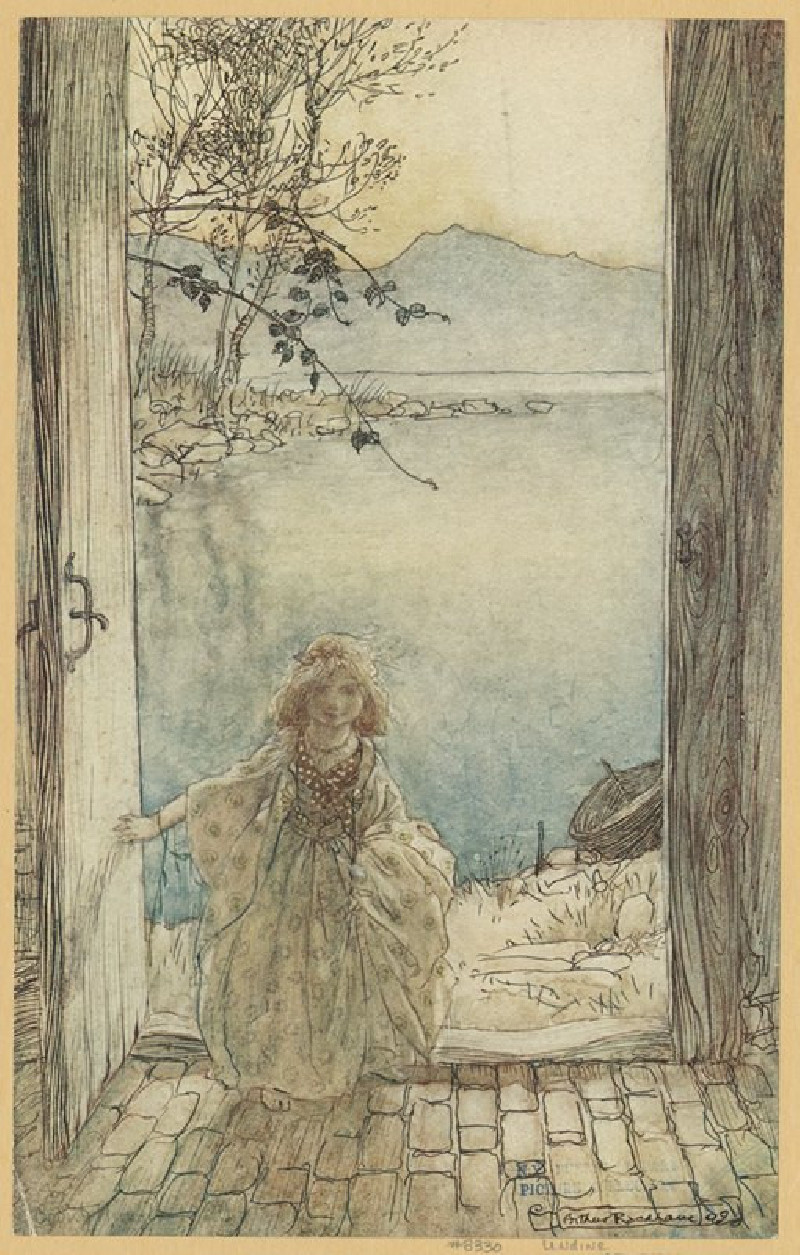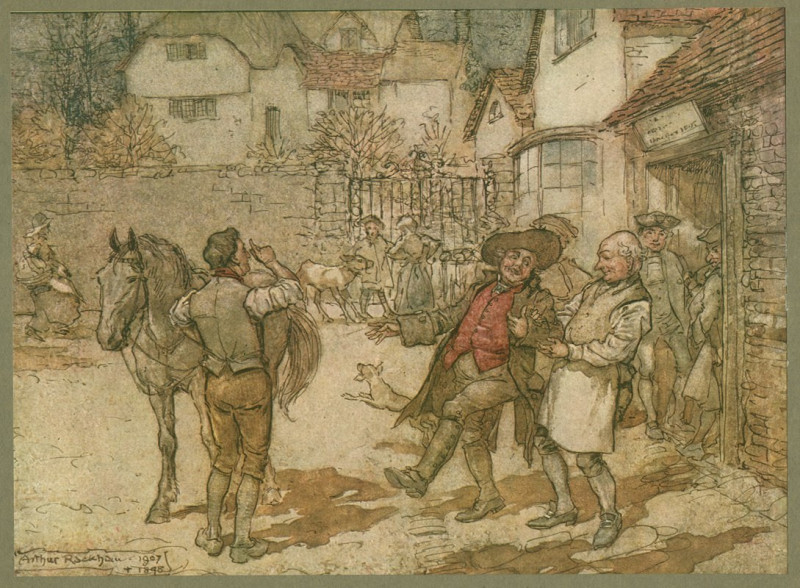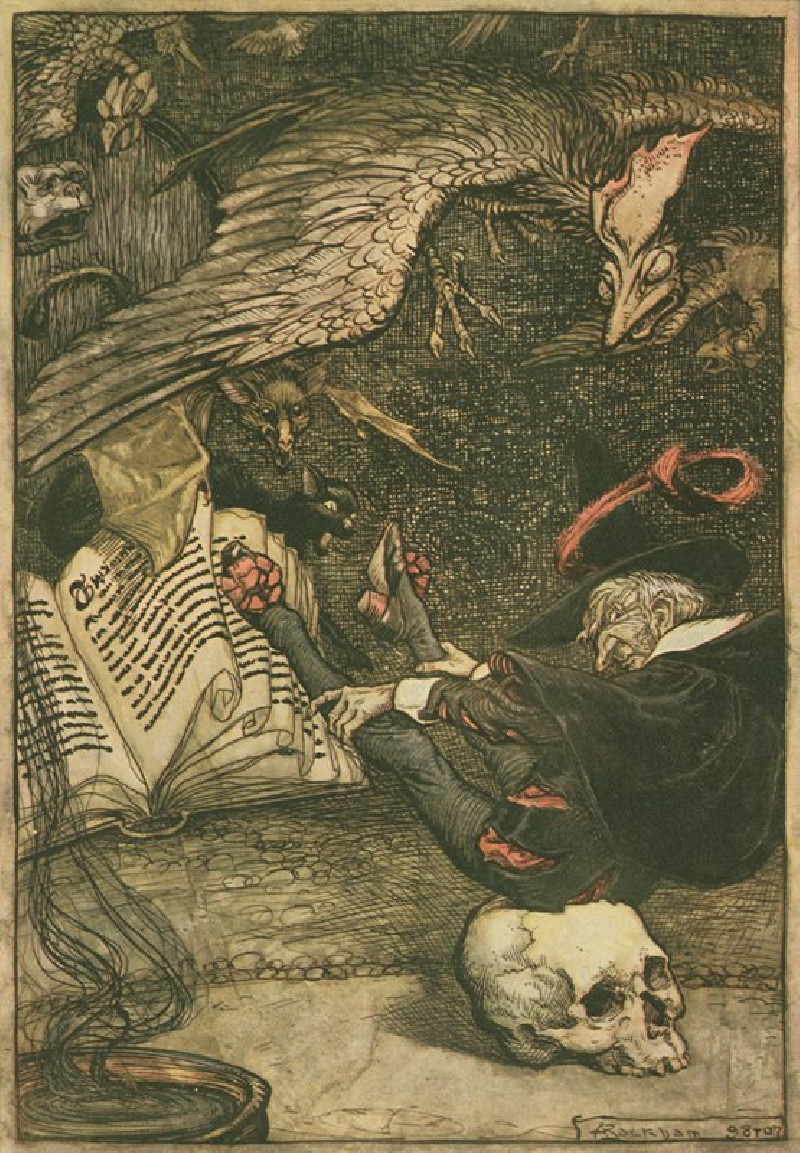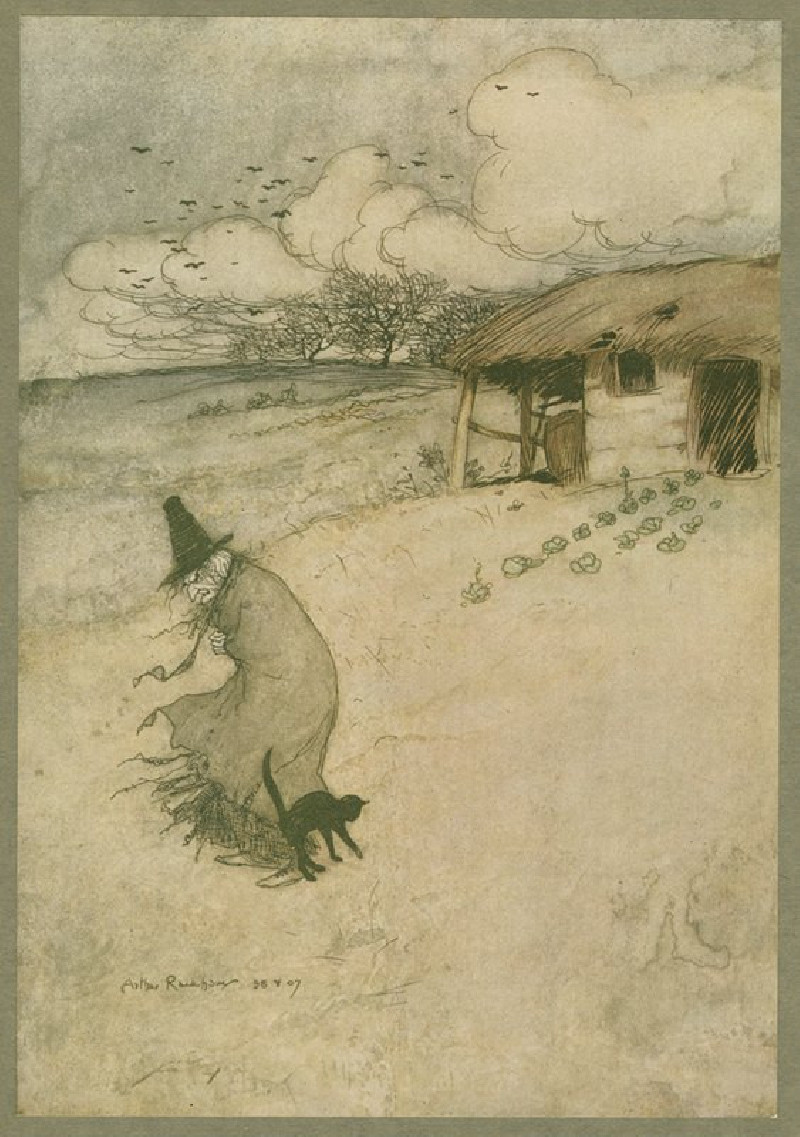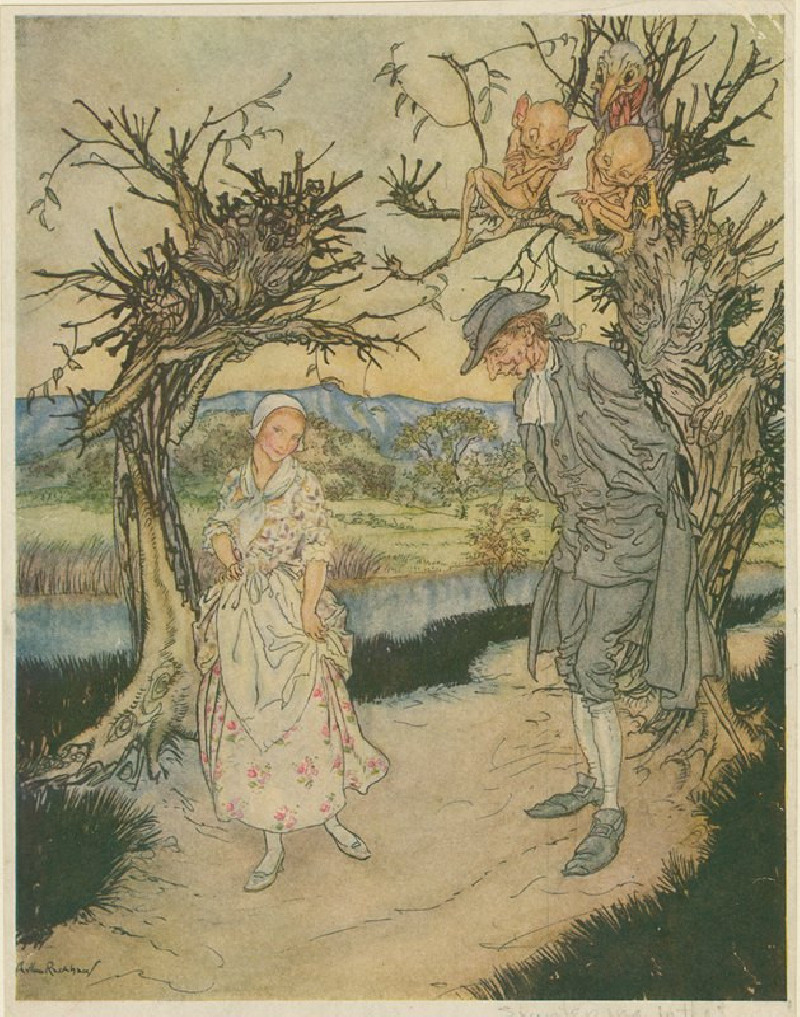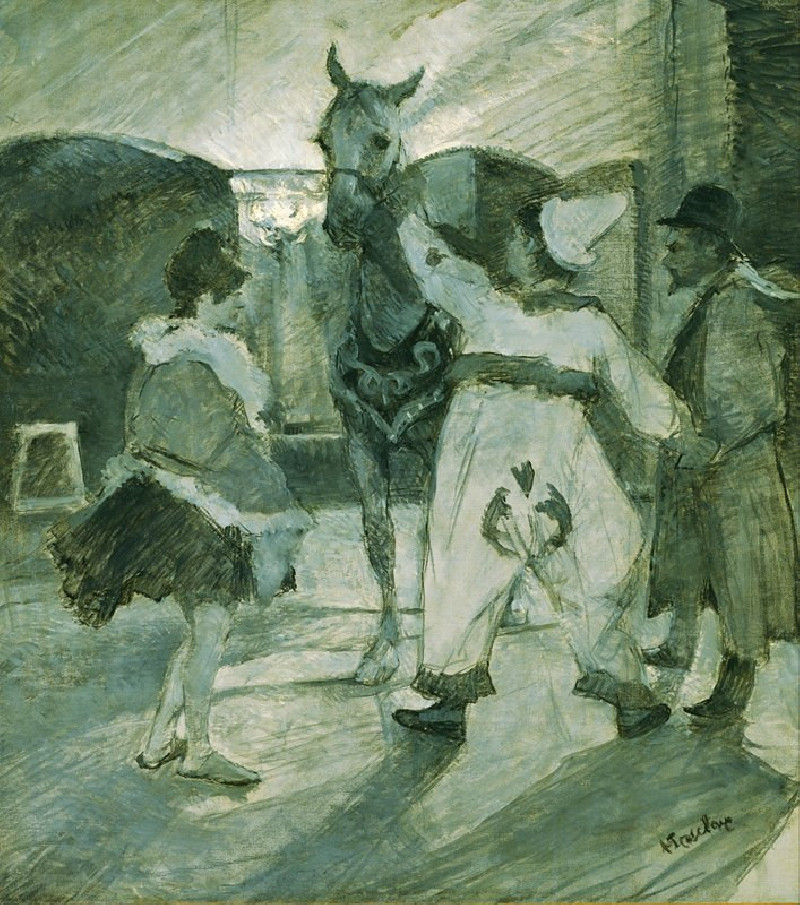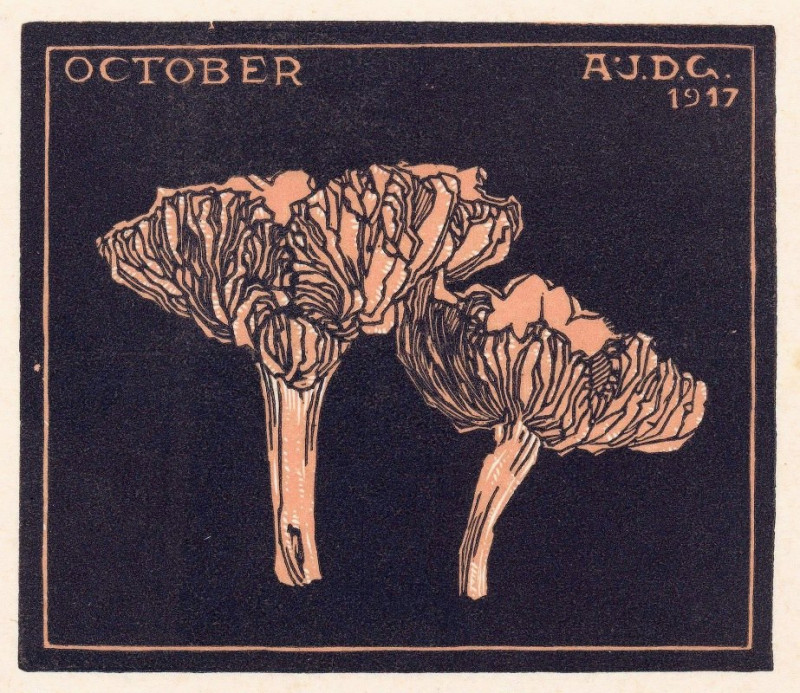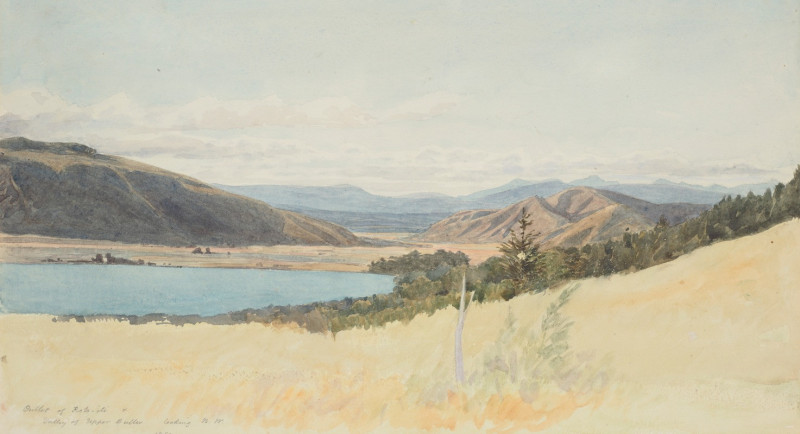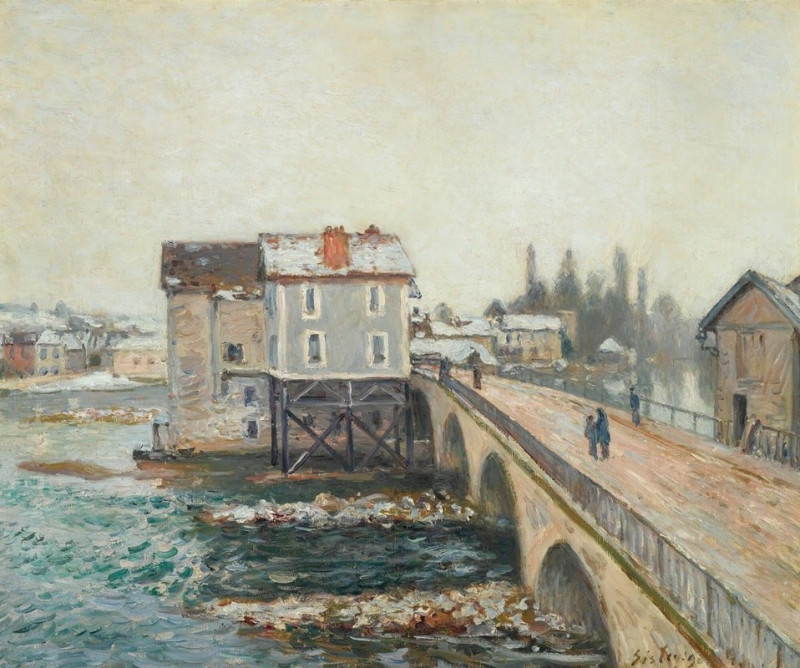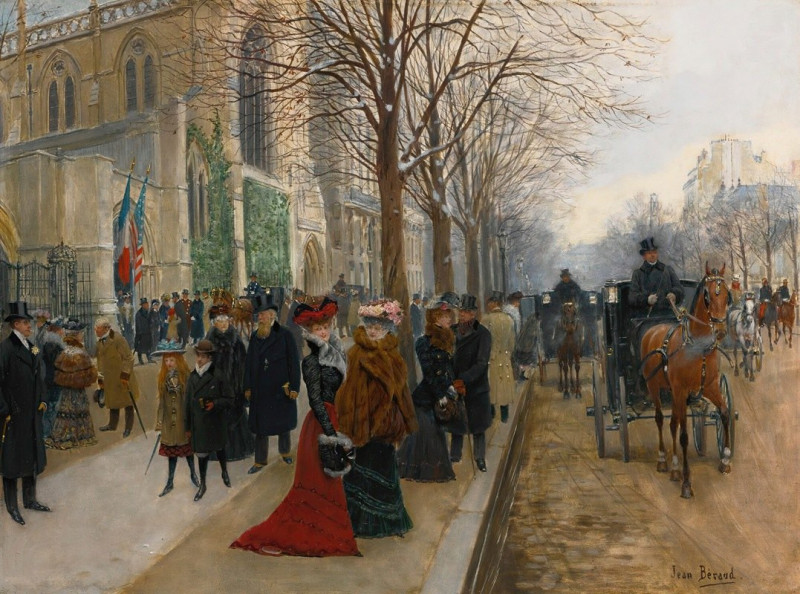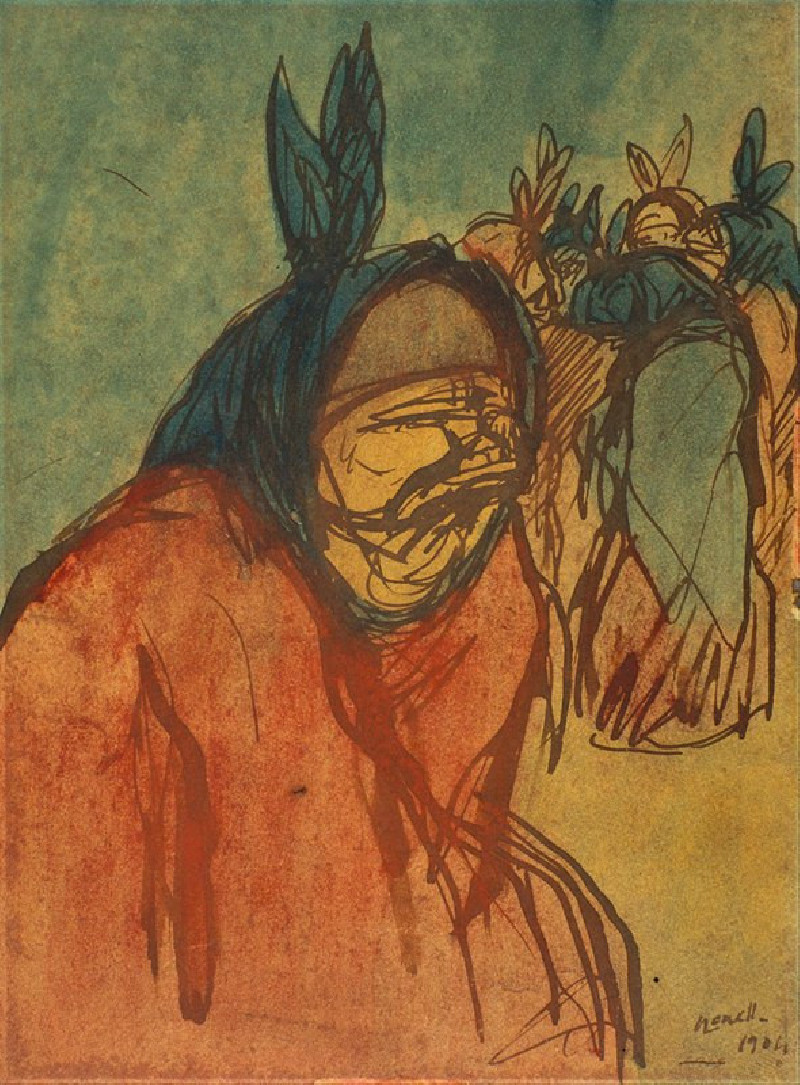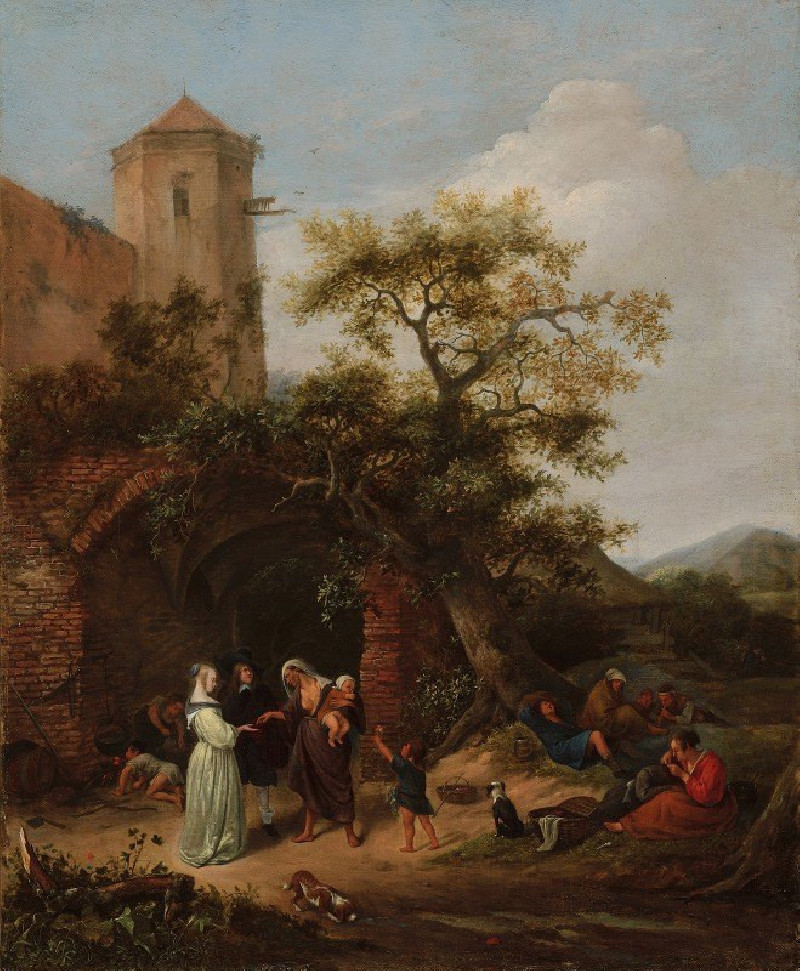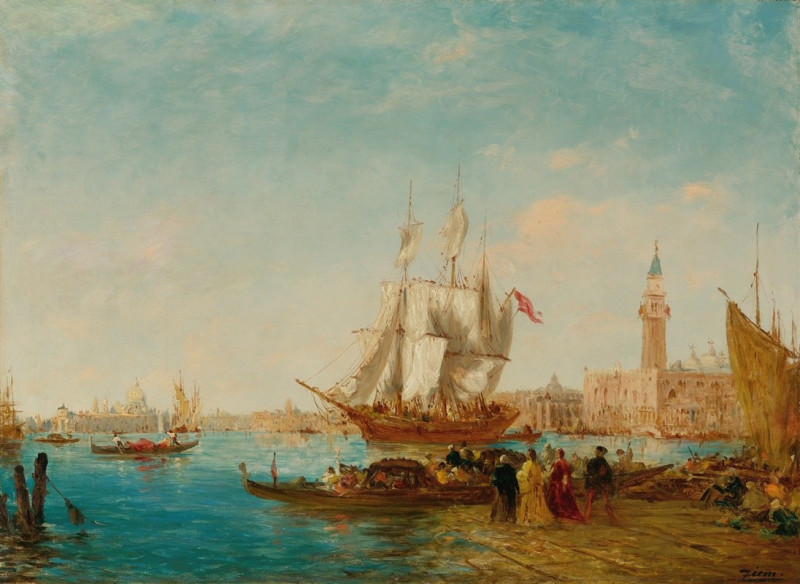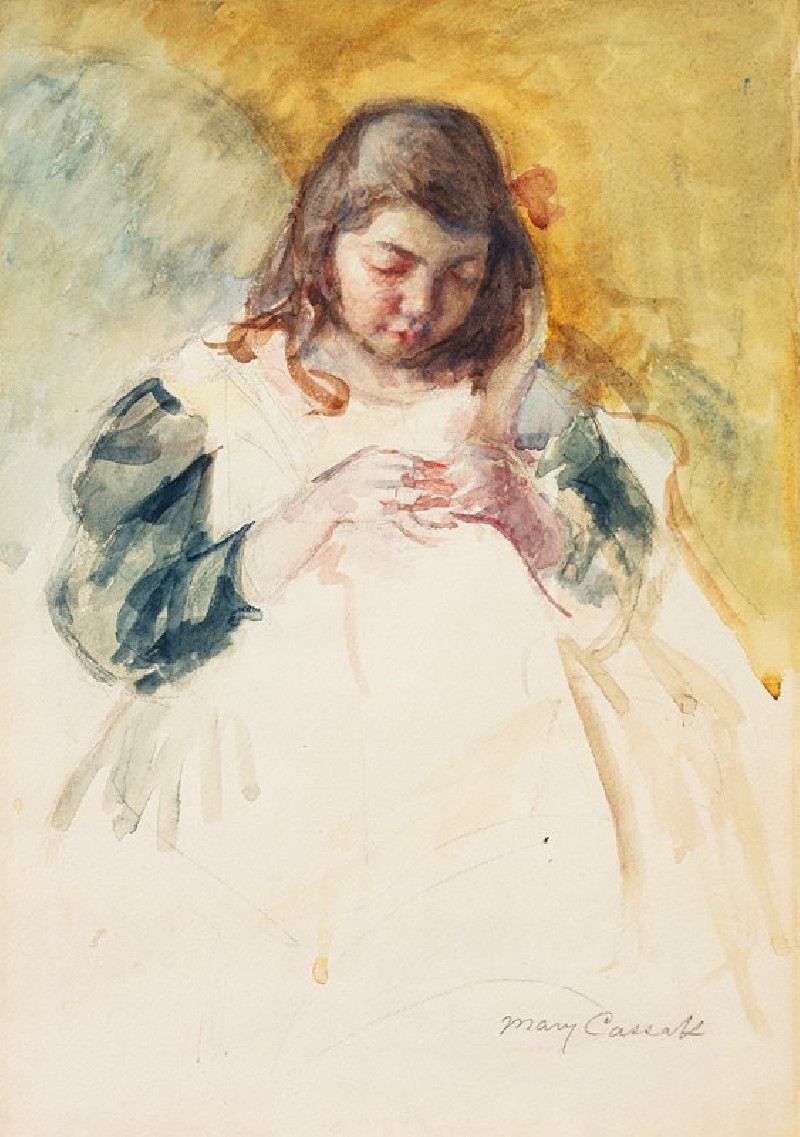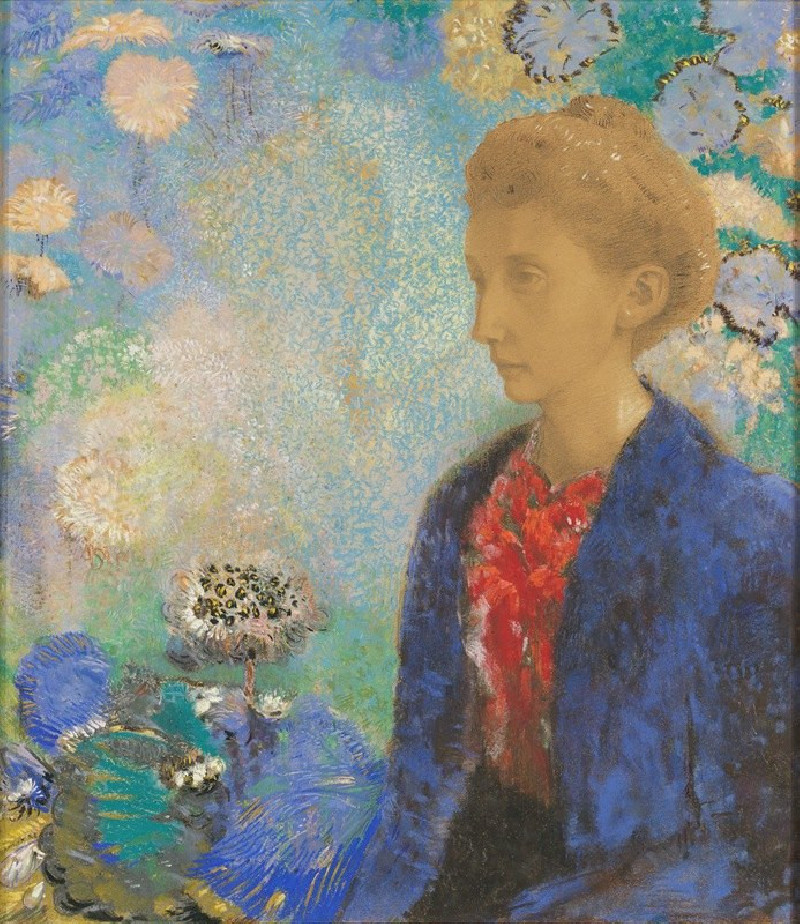Alas! dear Falada, there thou hangest (1920)
Technique: Giclée quality print
Recommended by our customers
More about this artwork
Arthur Rackham, renowned for his rich and evocative illustrations that grace the pages of classic literature, brings to life a poignant scene from the Grimm's fairy tale "The Goose Girl" in his 1920 work, "Alas! dear Falada, there thou hangest". Rackham's characteristic style, known for its intricate detail and ethereal quality, captures a moment steeped in both beauty and sorrow.The painting depicts the young princess, disguised as a common goose girl and tragically separated from her royal identity. She is shown standing in a rustic stone archway, which frames her as a figure of innocence and resilience amid her trials. Clad in a simple, earth-toned dress with her hair wind-swept and loosely tied, she emanates a sense of quiet strength and melancholy. In her hand, she holds a staff, signaling her current humble status tending to geese, which are illustrated with keen attention to their lively expressions and varied poses, encapsulating a sense of movement and life within the stonework setting.In the background, the subtle outline of a distant castle reminds viewers of the princess's rightful place and the poignant distance from her past life. The atmospheric quality of the work, achieved through Rackham's mastery of muted color palettes and textured detailing, evokes a feeling of nostalgia and fairy tale whimsy.This artwork not only tells a story of loss and identity but also showcases Rackham's ability to weave narrative depth into visual art. It invites viewers to step into a timeless narrative, reflecting on themes of authenticity, hardship, and the enduring nature of the human spirit.
Delivery
Returns
Arthur Rackham (19 September 1867 – 6 September 1939) was an English book illustrator. He is recognised as one of the leading figures during the Golden Age of British book illustration. His work is noted for its robust pen and ink drawings, which were combined with the use of watercolour, a technique he developed due to his background as a journalistic illustrator.

